Subscribe: Apple Podcasts | Google Podcasts | Spotify | Android | Stitcher | Blubrry | Email | TuneIn | RSS | More
This episode of the Crime Cafe podcast features my interview with crime writer Chip Jacobs.
Check out our discussion of his true crime story, The Darkest Glare, as well as hi debut novel, Arroyo.
Before I bring on my guest, I’ll just remind you that the Crime Cafe has two eBooks for sale: the nine book box set and the short story anthology. You can find the buy links for both on my website, debbimack.com under the Crime Cafe link. You can also get a free copy of either book if you become a Patreon supporter. You’ll get that and much more if you support the podcast on Patreon, along with our eternal gratitude for doing so.
Check us out on Patreon: https://www.patreon.com/crimecafe
Debbi (00:54): But first, let me put in a good word for Blubrry podcasting.
I’m a Blubrry affiliate, but that’s not the only reason I’m telling you this. I’ve been using Blubrry Podcasting as my hosting service for my podcast for years and it’s one of the best decisions I ever made. They give great customer service, you’re in complete control of your own podcast, you can run it from your own website, and it just takes a lot of the work out of podcasting for me. I find for that reason that it’s a company that I can get behind 100% and say, “You should try this.” Try Blubrry. It doesn’t require a long-term contract, and it’s just a great company, period. It also has free technical support by email, video, and phone, so you can get a human being there. Isn’t that nice?
If you want to podcast, try out Blubrry. No long-term contract, excellent distribution, and great technical support, too, by email, video, and on the phone. I’ve included an affiliate link on this blog.
Download a copy of the PDF transcript of this episode here.
Debbi (00:55): Hi, everyone. Today I’m pleased to have with me as my guest, a bestselling author and journalist. I love journalists, by the way, since I was a journalism major. Yes, I was <laugh>.
Chip (01:08): Me, too,
Debbi (01:09): All right. All right. His latest book is a true crime story. It is the latest, right? It’s called The Darkest Glare: A True Story of Murder, Blackmail, and Real Estate Greed in 1979 Los Angeles. I’ve read it and it is quite the bizarre story. He has written several other books, including Strange as It Seems: The Impossible Life of Gordon Zahlar, The People’s Republic of Chemicals, the international bestseller, Smogtown: The Lung-Burning History of Pollution in Los Angeles. I love these titles. Anyway, more recently he released his debut novel Arroyo, a work of serialized, I’m sorry, a work of historical fiction set around the construction of Pasadena’s mysterious Colorado Street Bridge, which really intrigued me. I had to look that up. He’s also worked as a reporter and written opinion pieces for a variety of major newspapers, including the LA Times, the New York Times, CNN, and several others. It’s my pleasure to introduce Chip Jacobs. Hey Chip, how are you doing today?
Chip (02:27): Hey. Hey, Debbi. Honored to be here. Thank you so much for having me on.
Debbi (02:31): Oh, well It’s my pleasure, believe me. Very happy to have you on. And so tell me, talk about how you ended up writing The Darkest Glare which was written a bit like a thriller with this absolutely psychotic villain in there. How did you learn about the story and what interested you in writing it as a book?
Chip (02:58): Yeah, I mean, I will never be called a true crime author cuz I’m not a true crime author. When I went into journalism I always tried to avoid getting assigned a crime story or active murder case or whatever, because that just wasn’t in my DNA. And nonetheless, stories will find you. And in the mid nineties I was working at a newspaper competitor to the LA Times, having a blast getting under people’s skin. And I developed a relationship with a source who just gave me tip after tip after tip, and he just had the highest batting average and he was always getting me above the fold on front page stories. And it was fantastic. I left journalism to work my first book biography but I was still freelancing and one day, true story, late nineties walking down Hollywood Boulevard, which back then and still now kinda looks like a Star Wars bar in terms of characters, <laugh> and some moments in your life crystallize.
When I went into journalism I always tried to avoid getting assigned a crime story or active murder case or whatever, because that just wasn’t in my DNA. And nonetheless, stories will find you.
(04:07): We just passed a homeless guy carrying a banjo and Jerry Stasi on the sidewalk, this is the protagonist of the book, Jerry Schneiderman, and says, did I ever tell you–because we developed some trust–that I had a double murderer chasing me? And he goes, yeah, my ex-wife thinks it killed the old me. And I thought he was just trying to impress me. It was braggadocio maybe. Maybe there was a little something there, but almost yanking my chain. Turned out not only was he being accurate, he was understating how really evil and devastating the crime was that he got sucked into in 1979 Los Angeles, which was a very dark period in American history. I don’t know if it’s as dark as now, but murders were high. We were fighting with each other. America seemed on decline. We were, there’s huge gas station lines and stagflation.
(05:07): The murder rate was so scary. It was fueling quote-unquote white flight, alarm sales, gun purchases. It was almost a battle. And my source back then was a brilliant space planner dealing with trying to grow the business too much because they had been talked into it by a very debonnaire partner, and they were doing space planning, kind of interior architecture. They were doing really well. They were crushing it. They had a different way of approaching than stodgy older firms. But then Jerry’s partner, a guy named Richard Kasparov said, I know a way to get rich even quicker. We’re gonna go into construction and when you go into construction, you need two things. You need a contractors’ license and you need experience, and boy did they hire the wrong person.
Debbi (06:02): <laugh>. Yeah. Yes, indeed. That came back to bite them in the ass, huh?
Chip (06:09): Oh yeah.
Debbi (06:11): In a big way. How many people did you interview and was it difficult to get people to talk to you about what happened?
Chip (06:19): That’s a great question. Without my journalism background, I could not have done this story. God is still trying to jackhammer patience into my soul. And this was something I learned in this story where you develop a source, and it might be years and years and years before they really tell you what you wanna know and you just can’t come onto them a thousand miles an hour. So I probably interviewed 30 people or something like that. Some had passed away. There were three or four people that did not wanna talk to me. And one person I met one time at a Hamburger Hamlet in West Los Angeles. And this crime, this murderer, this monster who was a, I don’t wanna be a spoiler, he haunted people even after he died. And I think there was some fear in these people. He’s got associates, maybe he’s gonna reincarnate and track me down.
Without my journalism background, I could not have done this story. God is still trying to jackhammer patience into my soul. And this was something I learned in this story where you develop a source, and it might be years and years and years before they really tell you what you wanna know and you just can’t come onto them a thousand miles an hour.
(07:29): I interviewed wives and girlfriends and things like that, and they’d be bawling when I’d interview them. And even though I tried to be diplomatic and empathic and all that, and sympathetic, they never got it out of their system. I would say my really big break came when I reached out to the assistant district attorney that prosecuted the case. He was retiring, he invited me over to his house and he opened up his garage door and there’s all these files he brought home and he goes, take your pick. And I spent a beautiful, delicious and also very dark afternoon going through his stuff, because it was dark in that garage and the things I was learning with these files was pretty dark about humanity. Traditionally, as a reporter, you go after the documents. So I went to downtown LA, something called the Hall of Records, which is in this dungeon-like basement below this Sixties building.
(08:30): And you feel like you are in a nuclear bunker going down there with kind of shady fluorescent lights. And it’s serpentine. There’s not a lot of humans, it smells. You finally enter this area and you expect there to be human moles working there. So finally, you know, have your case number. I go to the files, somebody has gone, or numerous people have gone through this box of files and taken stuff out. A massive amount. And I’ve faced this before in journalism where somebody doesn’t want you to know what’s going on. There’s only one set of records before it’s digitized and they just swipe ’em. Or they put her down their shirt and they walk out like Fawn Hall, during Iran –that’s what happened here. There was people that did not want to have any fingerprints on this story because of guilt, because of terror, because there’s something other shady happening.
(09:20): And so it was not easy filling in all the blanks of the story. And I felt a little bit like Jurassic Park where they had to add in DNA here and there, and that’s what it required me to do. But Jerry Schneiderman, my anti-hero, I sat with him for interviews many, many times. So it wasn’t always easy. I also not equivocated, but I vacillated about contacting the trigger man in the story cuz he was in prison. He’d been denied parole cuz he was considered so dangerous. He was like a brilliant kid who fell out of a car, hit his head and developed two things, epilepsy and psychopathy when he fell out of this car. And I didn’t not want him to know I was necessarily alive because in California’s parole system, you don’t know. This guy gets out, the internet will make it easy to find me. Maybe he’s this old bitter man. So I wavered and wavered and finally I got news that he died. And even though what he could have told me would’ve been invaluable, I also breathe a big sigh of relief. So did my family because they weren’t that thrilled with me poking my nose into this.
Debbi (10:33): I can imagine. All of what you’re saying is bringing up a question for me now. What psychological effect of all this did all this research have on you? Did you ever feel frightened or at risk or just any lingering effects almost like a PTSD afterward?
Chip (10:58): That’s a good, not a lot. I mean, I’m an independent writer, I work from home and I have a big window looking onto me and in this case something really evil happens through a window. And it occurred to me, oh my God, the guy could do it once, he could do it twice. But I wasn’t really concerned about that as much as trying to be a student of psychology to understand the effects of this murder spree on the people that were affected. That’s what I saw. I saw PTSD across the board, whether it was somebody that could barely bring themselves to talk about it or mention a name or Jerry. I think Jerry was so deeply scarred by this. I think actually the second tragedy was he was infected by the two men in his life that sent him sideways. Cuz he was really a very brilliant guy. He should have been one of those stories of a nerdy kid that had the crap bullied out of him who became a billionaire, but he refused to get therapy after all this went down. And maybe he didn’t wanna face the demons through the door. And that shortened his life. So that was really sad. And he never saw this book come out. He never enjoyed it. He never took his victory lap of survival. So that me made me melancholy. But I’m hoping that from above he’s cheering me on.
Debbi (12:32): I’d like to think so. Yeah, yeah, definitely.
Chip (12:35): I hope so.
Debbi (12:35): Yeah. How much time did it take you to research and write the book from start to finish?
Chip (12:43): Well, this book has come out in a couple different forms later. The Darkest Glare, this essence of it had been written in a previous book, but it was too biography-esque. And I wanted to turn it more true crime. But I would say overall probably took me a year and a half or so. I’d work on it, do an interview here or there, go back to something else like journalists do. So that the actual writing wasn’t that hard. It was a more difficult story because it’s a very psychological story and part of it, without being a spoiler alert, involved, I mean people have asked me to describe the story. And I would say it was kind of like 1979 version of Fargo, the great movie Fargo, one of my favorites ever. Coen Brothers. Brilliant, brilliant, brilliant. Where it’s not so much about the gore, it’s about the map to the gore and why people put themselves in situations where they’re gonna be vulnerable to the gore.
(13:44): Greed, ambition, purposeful naivete. We have hapless killers and if this was ever turned into a series, I’d like to have one of those pinball ding, a first attempt, miss. Ding, second attempt. Happens for comical, absurd reasons, they’re trying to kill. I mean they were working in a murder corporation that was targeting real estate executives in late seventies Los Angeles by a very angry, vengeful diabolically crafty guy. And yet they couldn’t get the job done. And it may have taken them as many, I don’t know, many as 10 times to achieve their goal of taking out a human being. And when they did, it created this panic, this ripple across a small ecosystem of families in Los Angeles where they wouldn’t be anywhere close to a window. They were always looking over their shoulders and the psychological part was almost as bad as the actual physical loss of life. Of course nothing can compare, but I mean there was a lot of people doing extra drinking, locking their doors, asking for police protection cuz there was a monster out in Los Angeles that was really good at killing and then playing the victim. And that’s the type of guy you don’t wanna have know where you live.
Debbi (15:10): Absolutely. For sure. Let’s see, you’ve also written a novel. What’s your novel about and what’s the strangeness around the Pasadena Bridge?
Chip (15:22): Okay, the Colorado Street Bridge in Pasadena, brooked two big valleys in the Los Angeles area, the progressive age, 1913, it connected the sort eastern part of the San Fernando Valley with the western part of the San Gabriel Valley. And this bridge was a talisman of the building automobile age. Things were changing from horse and buggies to cars to Model Ts. Henry Ford assembly line. There was an enclave of rich people out in Pasadena, actually tycoons that quote, wintered in Pasadena, and you’re affluent when you can turn a noun into a verb. So this was gonna be the most daring, longest bridge of its kind in the world. And all this ambition and brilliant engineering went into it. But boy, a lot of clashing, egos, disputes, secrets, death surrounded it during the construction. And I believe in this idea, some inanimate objects radiate energy of their creators.
So this was gonna be the most daring, longest bridge of its kind in the world. And all this ambition and brilliant engineering went into it. But boy, a lot of clashing, egos, disputes, secrets, death surrounded it during the construction. And I believe in this idea, some inanimate objects radiate energy of their creators.
(16:32): And the Colorado Story Bridge is now a historic bridge. It’s been around since over a hundred years but it also became known as a suicide magnet. And within a few years of its opening, people were coming to Pasadena in the Arroyo Seco, which means dry gulch or dry valley. But there’s a beautiful area looking in the mountains and they considered it a gorgeous place to die. And Pasadena did not, my city where the bridge is didn’t handle it well. They’re very proud of their city and the cultural museums and Caltech and the Rose Parade, et cetera. They didn’t wanna acknowledge it. And the suicides continued and continued and continued. So it’s got this dual personality of the Colorado Street Bridge is this incredible monument to flying concrete. And its beautiful arches based on a lot of European and Roman and Italian designs. But it’s the other side of it is people that are hopeless, that are having a bad stretch in their life kind of run here are attracted by it.
(17:46): There’s lot tons of rumors about ghosts, spirits and things that, supernatural things there. And at first I kind of was skeptical, but I’m not so anymore. Anyway, I created a novel, historical novel around the construction of this bridge with a guy that is a Pasadena Yankee Doodle Dandy who thinks the city can do no wrong and he kind of has a transformation. And the part of the story, it’s supposed to be entertaining. It was a dark time in the world when I wrote it, it came out in 2019. I was trying to tell myself an amusing story of heart and destiny. And I do believe if we don’t achieve what we’re supposed to in this life, we’re gonna come back maybe a lesser self and with those goals still to be claimed. And so my book has the same couple similar cast of characters in two different lives, 1913 and 1993. 1913 is when the bridge opened, despite all this turmoil and trauma, and 1993 is when they reopened it after a seismic retrofit.
You can read the whole interview here!





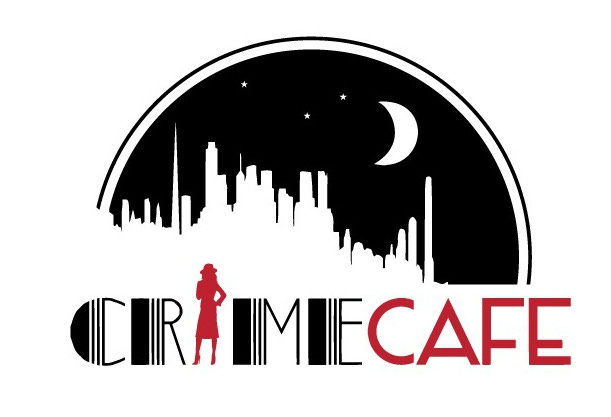
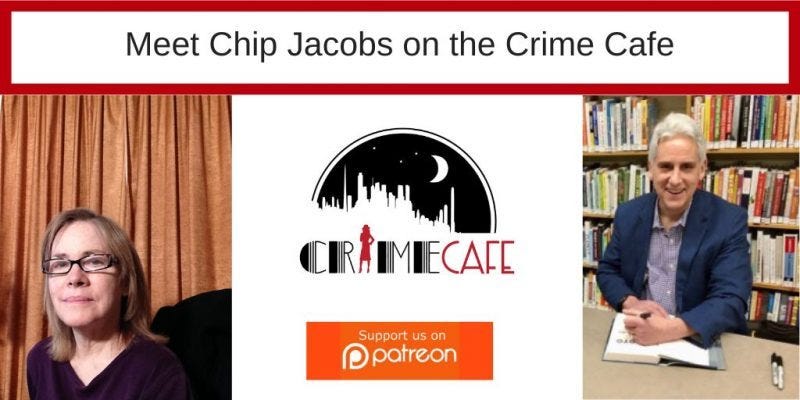



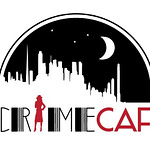
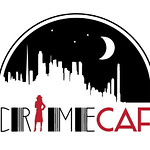

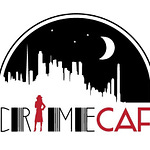
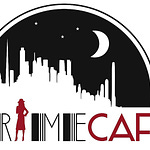
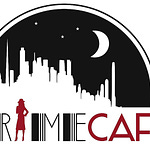
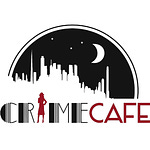
S. 8, Ep. 16: Interview with Crime Writer Chip Jacobs